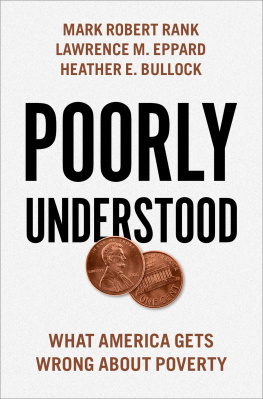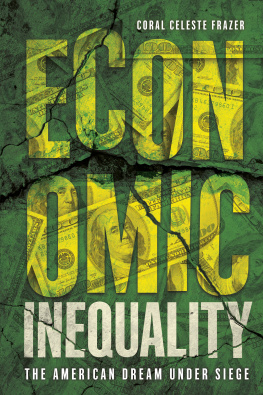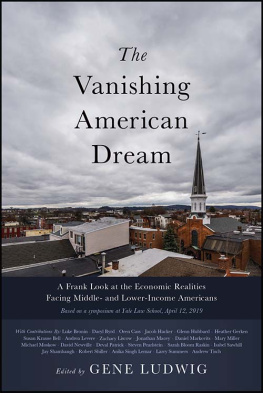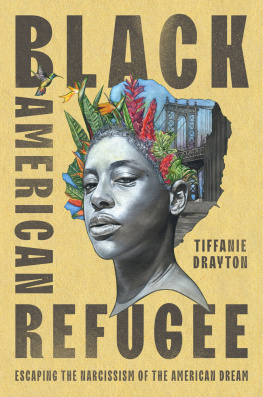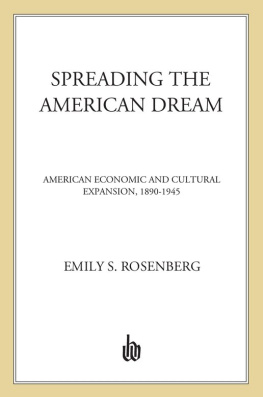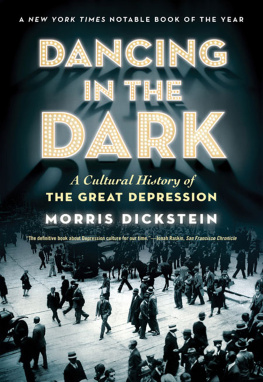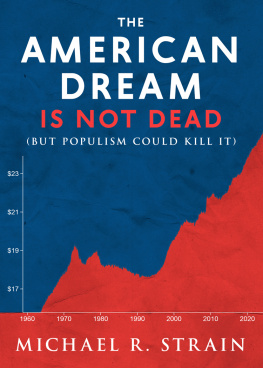Chasing the American Dream
Chasing the American Dream
Understanding What Shapes Our Fortunes
Mark Robert Rank
Thomas A. Hirschl
Kirk A. Foster


Oxford University Press is a department of the University of Oxford.
It furthers the Universitys objective of excellence in research, scholarship, and education by publishing worldwide.
Oxford New York
Auckland Cape Town Dar es Salaam Hong Kong Karachi
Kuala Lumpur Madrid Melbourne Mexico City Nairobi
New Delhi Shanghai Taipei Toronto
With offices in
Argentina Austria Brazil Chile Czech Republic France Greece
Guatemala Hungary Italy Japan Poland Portugal Singapore
South Korea Switzerland Thailand Turkey Ukraine Vietnam
Oxford is a registered trademark of Oxford University Press in the UK and certain other countries.
Published in the United States of America by Oxford University Press
198 Madison Avenue, New York, NY 10016
Oxford University Press 2014
All rights reserved. No part of this publication may be reproduced, stored in a retrieval system, or transmitted, in any form or by any means, without the prior permission in writing of Oxford University Press, or as expressly permitted by law, by license, or under terms agreed with the appropriate reproduction rights organization. Inquiries concerning reproduction outside the scope of the above should be sent to the Rights Department, Oxford University Press, at the address above.
You must not circulate this work in any other form and you must impose this same condition on any acquirer.
Catalogue record is available from the Library of Congress
ISBN 9780195377910
1 3 5 7 9 8 6 4 2
Printed in the United States of America
on acid-free paper
CONTENTS
1
Introduction
For that is what America is all about. It is the uncrossed desert and the unclimbed ridge. It is the star that is not reached and the harvest that is sleeping in the unplowed ground.
Lyndon B. Johnson, from his Presidential Inaugural Address, January 20, 1965
Many things come to mind when asked to describe the essence of Americaits energy and innovation; the various freedoms that Americans enjoy; the racial and ethnic mix of its people. But perhaps fundamental to the essence of America has been the concept of the American Dream. It has captured the imagination of people from all walks of life and represents the heart and soul of the country.
The American Dream has served as a road map for the way we often envision the course of our lives. The rules of the game are well-known, as is the bargain that is struck. For those willing to work hard and take advantage of their opportunities, there is the expectation of a prosperous and fulfilling life. The United States has long been epitomized as a land of equal opportunity, where hard work and skill can result in personal success and fulfillment, regardless of ones station in life. While the specifics of each dream vary from person to person, the overall vitality of the American Dream has been fundamental to the nations identity.
It can be found throughout our culture and history. It lies at the heart of Ben Franklins common wisdom chronicled in Poor Richards Almanack, in the words of Emma Lazurus etched onto the Statue of Liberty, the poetry of Carl Sandburg, or the soaring oratory of Dr. Martin Luther King, Jr. It can be heard in the music of Aaron Copland or jazz innovator Charlie Parker. And it can be seen across skylines from Manhattan to Chicago to San Francisco.
Yet it can also be found in the most humble of places. It lies in the hopes of a single mother struggling on a minimum wage job to build a better life for herself and her children. It rests upon the unwavering belief of a teenager living on some forgotten back road that one day he or she will find fortune and fame. And it is present in the efforts and sacrifices of a first generation American family to see their kids through college.
In many respects, the American Dream has been deeply rooted in the concept of a journeythe journey to a new country, the journey across generations, and of course, the journey within ones life. It is about motion and progress, it is about optimism, and it is about finding success and fulfillment along the way.
And yet the conditions under which Americans have pursued this Dream have been fraught with risk and economic uncertainty. The settlers of the eighteenth, nineteenth, and twentieth centuries took enormous risks coming to the new world, often arriving with little more than the clothes on their backs. Once here, there was not much in the way of government help or financial assistance (with the exception of available land). Self-reliance, rugged individualism, and determination were seen as the keys to prosperity. And yet, in spite of the risks and struggles, the American Dream has been, and continues to be, a guiding force reflecting the manner in which we see our lives unfolding.
Turn on the television, listen to the radio, surf the Internet, or pick up a magazine while waiting in an airport, and the images of the American Dream are ever present. From the solidly middle class couple engaged in their careers and lifestyle, to the rags to riches superstar making millions of dollars each year, the American Dream is portrayed as attainable, as long as we commit ourselves to hard work and perseverance in striving toward our goals.
In his immensely popular history of America entitled The Epic of America, published in 1931, James Truslow Adams was the first to coin the term the American Dream. He noted its centrality to the national identity, and wrote that it,
has lured tens of millions of all nations to our shores in the past century. [But it] has not been a dream of merely material plenty, though that has doubtless counted heavily. It has been much more than that. It has been a dream of being able to grow to fullest development as man and woman, unhampered by the barriers which had slowly been erected in older civilizations, unrepressed by social orders which had developed for the benefit of classes rather than for the simple human being of any and every class. And that dream has been realized more fully in actual life here than anywhere else, though very imperfectly even among ourselves. (1931: 405)
The American Dream has ultimately been about the manner in which our lives unfold and the ability of the individual, no matter where he or she comes from, to exert considerable control and freedom over how that process occurs. In a sense, it is about being able to live out our individual biographies to their fullest extent.
Take the quintessential American Dream of rising from rags to riches. During the latter part of the nineteenth century, Horatio Alger wrote dozens of stories about young street urchins who were able to lift themselves out of impoverished urban conditions through their hard work and moral strength, eventually finding wealth and acclaim in their lives. The popularity of these stories was enormous throughout the late nineteenth and early twentieth centuries, and this particular pattern of success has remained in our national consciousness ever since.
Or take the image of the American Dream that developed after World War IIthat of achieving a comfortable middle class standard of living. This dream included a well-paying and stable job, a house in the suburbs, a family with two or three children, a new car in the garage, and a two-week summer vacation. Such images were broadcast weekly into Americas living rooms through radio and television programs such as
Next page

